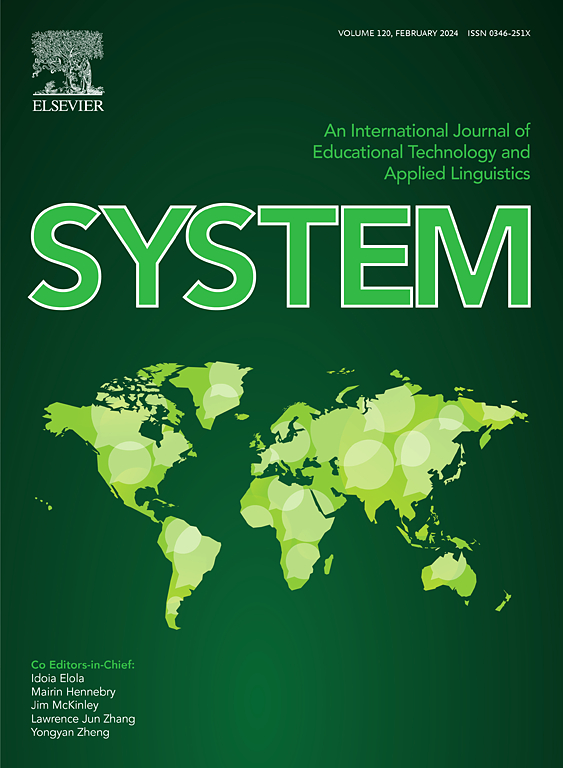EFL university students’ game element preferences and learning needs: Implications for the instructional design of digital gamified classes
IF 4.9
1区 文学
Q1 EDUCATION & EDUCATIONAL RESEARCH
引用次数: 0
Abstract
Digital gamification has a great potential for enhancing EFL learners' motivation and achievement. A digital gamified class should be the integration of ‘game’ and ‘learning’ aspects. However, most studies on it have been conducted only with the hypothesis of using game elements to improve the student experience, ignoring the role of students' learning needs in the success of digital gamification. The present study employed the Target Needs Analysis Model and used five commonly used game elements in class to investigate university EFL students' learning needs, game element preferences, and the relationship between them, with English writing homework as the application context. Online survey data from 505 EFL learners who have experienced English writing homework in Chinese universities were collected. Through descriptive analysis, their preferred game elements for designing English writing homework were found (competition the most while ranking the least). Five types of learning needs were identified as well, ranging from text types to writing tasks. In addition, the results of the content analysis showed that a small percentage of participants were reluctant to use digital gamification due to unfamiliarity (about 9.4 %) and demotivation (about 3.6 %). Three design principles for gamified English writing were also yielded, that is, instant and personalized feedback, appropriate time pressure, and difficulty levels. Moreover, path analysis and Structural Equation Modeling approaches demonstrated that there was no significant correlation between specific types of game elements and writing needs, although different gamification designs could slightly facilitate the fulfillment of learning needs. Furthermore, we gave both practical implications and recommendations for future research on digital gamification for learning.
英语大学生游戏元素偏好与学习需求:对数字游戏化课堂教学设计的启示
数字游戏化在提高英语学习者的学习动机和学习成绩方面具有巨大的潜力。数字游戏化课程应该是“游戏”和“学习”的结合。然而,大多数关于游戏化的研究都只是假设使用游戏元素来改善学生体验,而忽略了学生的学习需求在数字游戏化成功中的作用。本研究采用目标需求分析模型,以英语写作作业为应用情境,运用课堂上常用的五种游戏元素,调查大学英语学生的学习需求、游戏元素偏好以及二者之间的关系。本文收集了505名在中国大学经历过英语写作作业的英语学习者的在线调查数据。通过描述性分析,发现学生在设计英语写作作业时偏好的游戏元素(竞争最多,排名最少)。从文本类型到写作任务,还确定了五种类型的学习需求。此外,内容分析的结果显示,一小部分参与者由于不熟悉(约9.4%)和缺乏动力(约3.6%)而不愿使用数字游戏化。游戏化英语写作的三个设计原则,即即时和个性化的反馈,适当的时间压力和难度等级。此外,路径分析和结构方程建模方法表明,特定类型的游戏元素与写作需求之间没有显著的相关性,尽管不同的游戏化设计可以略微促进学习需求的满足。此外,我们还对数字游戏化学习的未来研究提出了实际意义和建议。
本文章由计算机程序翻译,如有差异,请以英文原文为准。
求助全文
约1分钟内获得全文
求助全文
来源期刊

System
Multiple-
CiteScore
8.80
自引率
8.30%
发文量
202
审稿时长
64 days
期刊介绍:
This international journal is devoted to the applications of educational technology and applied linguistics to problems of foreign language teaching and learning. Attention is paid to all languages and to problems associated with the study and teaching of English as a second or foreign language. The journal serves as a vehicle of expression for colleagues in developing countries. System prefers its contributors to provide articles which have a sound theoretical base with a visible practical application which can be generalized. The review section may take up works of a more theoretical nature to broaden the background.
 求助内容:
求助内容: 应助结果提醒方式:
应助结果提醒方式:


